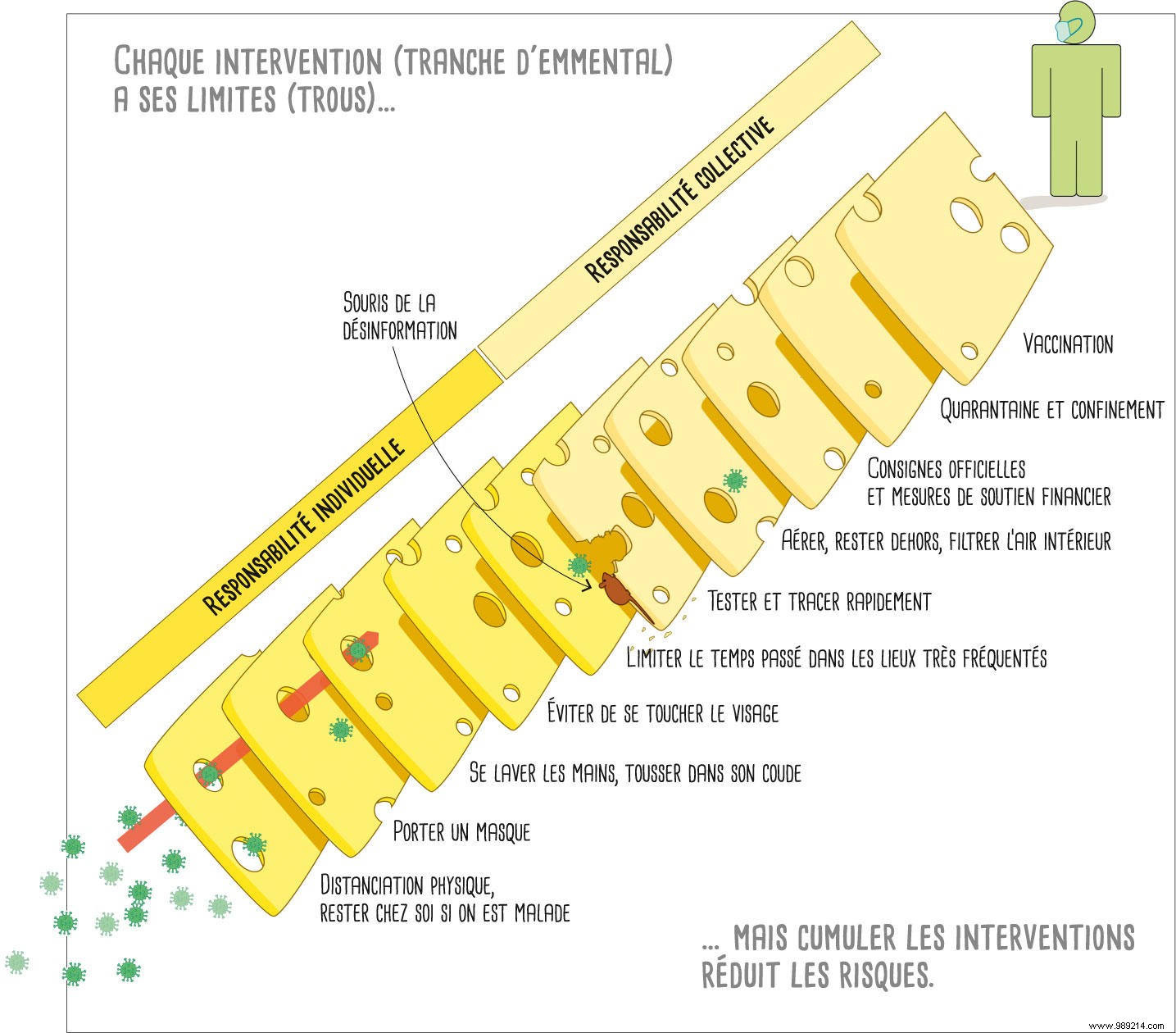A priori, there is absolutely no connection between the SARS-CoV-2 coronavirus and cheese. Nevertheless, an Australian virologist has developed a sliced model in which each slice represents an intervention within the framework of the pandemic. The Emmental also has holes that illustrate the limits of each of these same interventions.
According to the Coronavirus Resource Center at Johns Hopkins University (USA), the global Covid-19 toll is over 179 million cases for about 3.8 million deaths . Let us also mention the fact that almost 2.9 billion doses of vaccines have already been administered. Some countries seem to have definitively or almost managed the epidemic on their soil, where others are still struggling with it. Some have also relaxed their restrictions despite fears of a rebound in a few weeks or months.
Ian M. Mackay is a virologist at the University of Queensland (Australia). He imagined a model called "Emmental cheese" (in the form of slices of cheese) to materialize the need to combine several types of interventions in order to fight against the Covid-19 pandemic. This model was published in December 2020 by the New York Times. It has since been translated into French by the Courrier International (see below) and was broadcast in an interactive version a few weeks ago by the British channel BBC.

This Emmental model is a slightly more elaborate version of the Swiss cheese model having appeared on Twitter in October 2020. The diagram in question remains however simple and therefore very easy to understand. Each slice of this cheese represents an intervention in the context of the Covid-19 pandemic. The holes in the cheese embody the limits of each of these interventions. Despite these "leaks", Ian M. Mackay points out that multiple interventions reduce the risks.
A dozen slices are present, half of which are on the "individual responsibility" side and the others on the "collective responsibility" side. The first part therefore lists what people can do personally , namely barrier gestures such as physical distancing, wearing a mask and hygiene. The second part concerns more general measures , from rapid testing and tracing to vaccination and quarantine and confinement episodes. Finally, you should know that Ian M. Mackay is not lacking in humor, as evidenced by the presence of a "misinformation mouse" digging his own holes in the cheese.